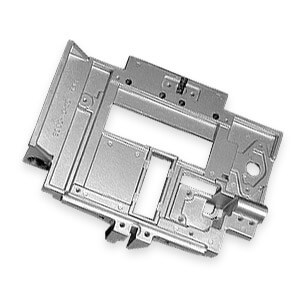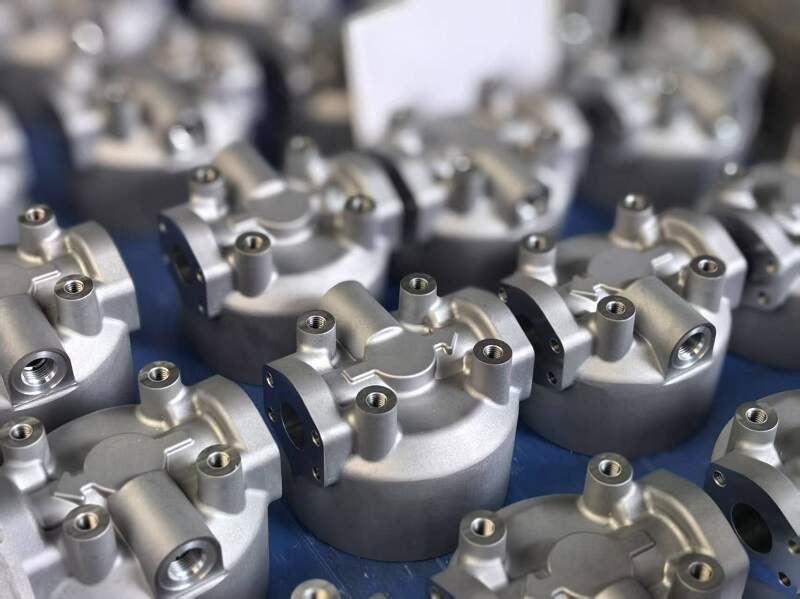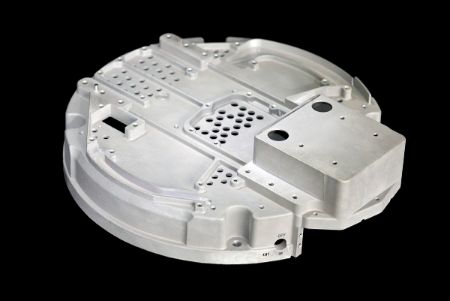Aluminum Casting Explained: Key Facts and Insights for Sector Professionals
Aluminum casting functions as a vital process in contemporary manufacturing, shaping parts across numerous fields. Its diverse techniques, such as sand and die casting, satisfy different manufacturing requirements. The one-of-a-kind buildings of aluminum alloys boost their applicability, yet tests stay in preserving high quality and efficiency. Comprehending these elements is essential for sector professionals. What are the most recent developments and finest practices that can even more maximize this process?
Summary of Aluminum Casting Processes

Crucial element of aluminum casting processes include the preparation of molds, which may be made from sand, metal, or ceramic materials, relying on the intended use. In addition, temperature control is important to ensure appropriate melting and solidification of aluminum.
The casting process permits for complex layouts and can attain high degrees of dimensional precision. When cooled down, the spreadings may undergo ending up procedures such as machining or surface area treatment to fulfill particular performance requirements. In general, aluminum casting works as a versatile manufacturing technique, effectively fulfilling the diverse needs of various industries.
Sorts Of Aluminum Casting Methods
In the domain name of aluminum casting, numerous techniques are utilized to accomplish different outcomes. Sand casting methods give versatility and cost-effectiveness for intricate forms, while die casting processes offer high precision and efficiency for mass production. Recognizing these techniques is essential for selecting the ideal approach based on job requirements.
Sand Casting Methods
Sand casting strategies represent an essential approach in aluminum casting, where sand is used as a mold material to form molten metal. This procedure entails developing a pattern from the desired component, which is then put in a sand blend to create a mold. The sand is compressed around the pattern, and after removal, it develops a cavity in the shape of the part. Molten aluminum is put into this tooth cavity, allowing it to solidify and cool down. One substantial advantage of sand casting is its flexibility; it can accommodate large elements and complicated shapes. Additionally, the materials utilized are relatively economical, making it an obtainable option for various production applications in the aluminum industry.
Die Casting Processes
Die casting processes are a prominent approach for shaping aluminum parts, making use of high-pressure methods to force molten metal right into exactly engineered mold and mildews. This process is specifically favored for its capacity to produce intricate forms with tight tolerances and a smooth finish. There are 2 primary sorts of die casting: warm chamber and chilly chamber. Warm chamber die casting appropriates for metals with low melting factors, enabling faster production rates. Conversely, cool chamber die casting is optimal for higher melting factor steels, requiring a separate melting furnace. Both techniques boost performance and decrease material waste, making them vital in automotive, aerospace, and durable goods sectors. Understanding these procedures aids professionals choose the most appropriate technique for their details applications.
Product Feature of Aluminum Alloys

Toughness and Sturdiness
Strength and durability are essential characteristics of aluminum alloys that make them ideal for various casting applications. These products exhibit a favorable strength-to-weight ratio, permitting the production of lightweight yet robust parts. With respect to tensile toughness, specific aluminum alloys can be crafted to hold up against significant lots without warping. This property is particularly important in industries such as aerospace and auto, where efficiency and safety and security are critical. Furthermore, aluminum alloys usually preserve their mechanical properties under varied temperature level problems, guaranteeing regular efficiency. The intrinsic ductility of these alloys likewise enables for reliable shaping throughout the casting procedure, making it easier to produce intricate geometries. In general, the toughness and longevity of aluminum alloys add considerably to their extensive use in sophisticated applications.
Rust Resistance Characteristics
While aluminum alloys are treasured for their stamina and light-weight residential properties, their deterioration resistance is one more essential attribute that enhances their viability for numerous applications. Aluminum naturally develops a safety oxide layer when exposed to moisture, which helps to stop further oxidation. This fundamental residential or commercial property makes aluminum alloys specifically important in environments prone to corrosion, such as marine and industrial settings. Additionally, different alloy make-ups can affect resistance levels, with particular alloys especially engineered to improve this characteristic. Therapies like anodizing can additionally improve deterioration resistance by thickening the oxide layer. Comprehending the rust resistance of aluminum alloys is essential for market professionals when choosing materials for jobs requiring toughness and longevity in difficult environments.
Advantages of Aluminum Casting in Production
Aluminum casting offers various benefits in production, making it a preferred option for different sectors. One considerable advantage is its lightweight nature, which adds to minimized transport costs and improved energy efficiency in final product. Additionally, aluminum's superb thermal and electrical conductivity improves functionality in applications requiring warmth dissipation or electrical conduction.
The product's capacity to be cast into intricate shapes permits layout versatility, reducing the requirement for extra machining procedures. Furthermore, aluminum casting displays remarkable rust resistance, leading to longer product life expectancies and lower upkeep prices.

Common Applications of Aluminum Castings
The versatility of aluminum casting enables its widespread use throughout various industries. Typical applications consist of vehicle parts, where light-weight and corrosion-resistant components, such as engine blocks and transmission housings, boost vehicle efficiency. In the aerospace industry, aluminum castings are used for architectural elements, using toughness without adding significant weight.
Additionally, the electrical industry take advantage of aluminum spreadings in making units and heat sinks, where thermal conductivity is vital. The customer goods field also includes aluminum castings in products like pots and pans, furnishings, and attractive products, integrating aesthetic appeals with performance.
In addition, the building and construction market uses aluminum castings for architectural elements, window structures, and fixtures, which supply sturdiness and design flexibility. Generally, the varied applications of aluminum castings underscore their relevance in modern-day manufacturing, contributing to developments in efficiency and item design across several areas.
Technologies and Technological Advancements
As sectors proceed to evolve, technologies in aluminum casting modern technology are transforming their explanation manufacturing procedures and item capabilities. Advancements in 3D printing and additive manufacturing have actually allowed the production of complicated geometries that were previously impossible to accomplish with conventional methods. These technologies enable fast prototyping, minimizing preparations and expenses.
In addition, improvements in mold and mildew layout and products have actually enhanced the casting process by raising performance and lowering waste. The assimilation of clever manufacturing methods, such as IoT gadgets and real-time information analytics, enables much better monitoring and optimization of production parameters, leading to greater high quality results.
Advancements in aluminum alloys supply enhanced stamina, corrosion resistance, and lightweight buildings, providing to the growing needs in aerospace and vehicle sectors. Jointly, these developments are not only boosting productivity yet additionally fulfilling the extensive requirements of contemporary engineering applications.
Ideal Practices for Quality Control in Aluminum Casting
Making certain premium outcomes in aluminum casting calls for adherence to best techniques that encompass various stages of the manufacturing process. First, complete material examination is necessary to verify the high quality of aluminum alloys utilized, as contaminations can considerably impact the last item. Implementing specific melting and putting techniques minimizes issues; maintaining image source ideal temperature levels stops oxidation and promotes harmony.
Moreover, mold design plays an essential role; using computer-aided style (CAD) can enhance precision and decrease human mistake. Routine tracking of the cooling procedure is crucial to avoid warping and shrinkage. In addition, using non-destructive screening methods, such as ultrasonic or X-ray evaluations, helps determine inner problems without harming the components.
Establishing a feedback loop with engineers and operators promotes continual enhancement, ensuring that quality control measures develop alongside technical improvements. By following these finest techniques, makers can boost the dependability and efficiency of aluminum castings.
Often Asked Concerns
What Are the Ecological Impacts of Aluminum Casting?
The environmental impacts of aluminum casting include considerable energy consumption, greenhouse gas discharges, and prospective water contamination from factory procedures. In addition, bauxite mining for aluminum ore can result in environment damage and dirt degradation.
Just How Does Aluminum Casting Compare to Various Other Metal Casting Procedures?
Aluminum casting commonly uses advantages in lightweight parts and deterioration resistance compared to various other procedures, such as iron or steel casting, which might supply greater strength however cause much heavier and much less corrosion-resistant items. - Precision aluminum casting
What Prevail Defects in Aluminum Castings and Their Causes?
Usual defects in aluminum spreadings consist of porosity, shrinkage, and additions. Reasons typically stem from inappropriate pouring methods, inadequate mold layout, or contamination of the liquified steel, impacting the end product's integrity and efficiency.
What Security Precautions Should Be Taken During Aluminum Casting?
During aluminum casting, essential safety and security precautions consist of wearing protective equipment, guaranteeing correct air flow, maintaining a clean work area, managing liquified metal with care, and adhering to established protocols to minimize threats of burns, inhalation risks, and accidents.
Exactly How Can I Boost the Efficiency of My Aluminum Casting Procedures?
To boost efficiency in aluminum casting operations, one ought to enhance mold design, simplify product handling, utilize check this automated processes, conduct normal maintenance on tools, and buy worker training to enhance skills and efficiency.
Different techniques exist, aluminum casting includes a number of key procedures that provide to various applications and demands. Trick aspects of aluminum casting procedures include the preparation of mold and mildews, which may be made from sand, metal, or ceramic products, depending on the planned use. Sand casting techniques stand for a basic approach in aluminum casting, where sand is used as a mold and mildew product to form liquified metal. As industries continue to advance, developments in aluminum casting technology are changing production processes and product abilities. Making certain premium results in aluminum casting needs adherence to finest methods that include various phases of the manufacturing procedure.